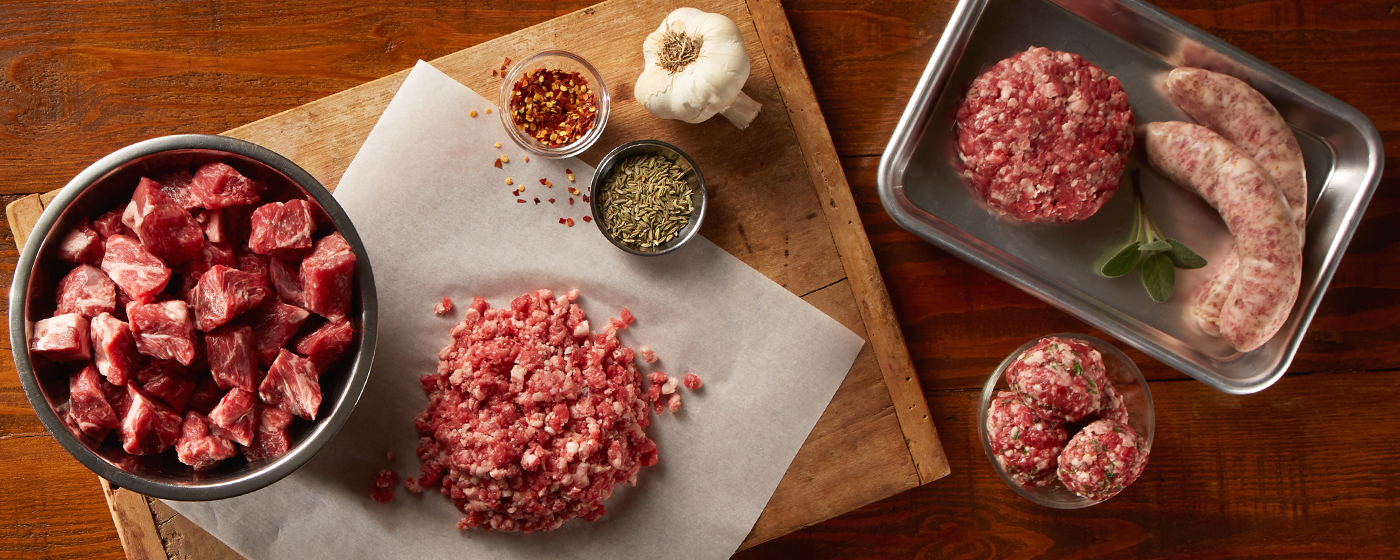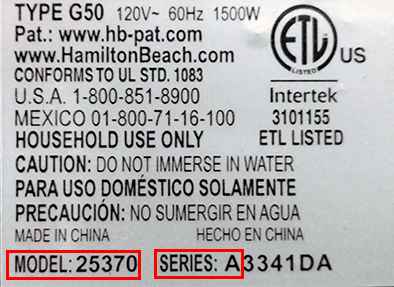
Take control over how your food is prepared and have confidence in knowing every step in the process. Whether bounty from the hunt, or a whole cow from your local farmer, you can customize your grind. Make sausages, burgers, and jerky—all fresh, from scratch. But wait! Before you go all in, there are some tips and tricks that you should know to ensure you keep that meat grinder working properly and that the ground meat pouring out of it is the best possible quality. Here are 12 tips to help you master the meat grinder:
- Place the metal parts into the freezer ahead of time: plates, knife, head, auger, and tray.
- Keep the meat as cold as possible—almost freezing—and try to touch it as little as possible. Your hands are radiating heat!
- Include added fat content. Sometimes to achieve an 80/20 (our favorite way to go), 85/15, or 90/10 [etcetera] blend, you'll need some help from another source, as your particular cut of meat may be too lean. Purchase beef or pork fat from your local butcher and keep it frozen until you're ready to grind. If your fat gets warm, it will melt into the meat, rather than keeping its distinct state, and your ground meat texture will be ruined.
- Do a first grind. Almost always, you'll need to grind your meat through a coarse plate before grinding it any finer. This is called a first grind. If you try to grind most meats any finer to begin with, you'll create a mushy texture, and likely jam up your grinder.
- Use a combination of grinds. Especially if you'll be making sausage or other products that you want to bind tightly. We recommend leaving one-third coarse, grinding the rest through the medium plate, keeping one-third medium, and then grinding that remaining one-third finely.
- No first grind for waterfowl. When you're grinding ducks, geese, and other waterfowl, grind all of it through the fine plate, right away - no need for a first grind.
- Clean as you go. As soon as the meat begins to slow, or come out mushy, turn your grinder off and remove the sinew from the knife & buildup from the auger. Then, replace your newly cleaned auger, knife, and plate. The buildup will cause the meat to warm— and warm meat isnevera good thing.
- You CAN get all of the meat out. When meat completely stops flowing from the grinder, there is still likely a bit inside of the head. One of the best ways to get it out is to run a piece of bread through the grinder. The remaining meat will come out, and the ground bread that comes out behind it can just be discarded (it won't really hurt to add it to your ground meat either though).
- Store the meat properly after grinding. Use Weston Ground Meat Bags with our Bag Neck Sealer to keep your ground meat not only safe, but as fresh as possible when storing in the freezer. Alternatively, you could use a Weston Vacuum Sealer.
- Ready your grinder for future use. Disassemble and completely clean your grinder parts in hot, soapy water. Be sure to thoroughly dry the parts after. Silicone Spray and/or Sanitary Lubricant help to protect and lubricate the parts.
- Don't forget the nooks and crannies. Use our Cleaning Brush Set to thoroughly clean the inside of the head and plates of the grinder.
- Remember that grinder knives dull just like any other knife. Change Grinder Knives and Plates regularly, and be sure to purchase the same type of steel. Different steels vary in hardness, which can cause a harder knife to scrape metal from your plate into your food. A harder plate dulls your knife quickly.
Now that you've learned the basics for grinding meat, you are ready to put that knowledge to work making a slew of different recipes for your family to enjoy. From meatloaf and sloppy joes, to burgers and homemade sausage, you'll impress your family and friends with tasty meals that are as good for you as they are delicious. If you need more information on the range of meat grinders that we carry, visit our Collection of Grinders. And if you are looking for some more specific tips for burgers, be sure to read Ten Tips to Make Better Burgers.


